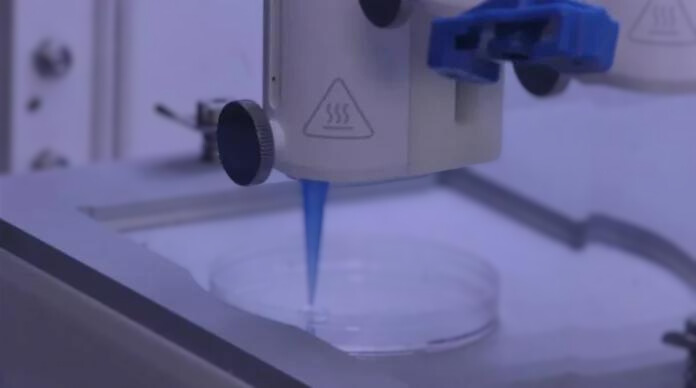In new study, scientists used 3D bioprinting to make structures that look like hair follicles grow out of lab-grown human skin tissue.
Researchers in the US at Rensselaer Polytechnic Institute start the process by “growing” skin and hair root cells in a lab. Finally, they mix them with special proteins and other stuff to make “bio-ink.”
Then, a very fine needle is used to inject this material into skin that was made in a lab. They print it one layer at a time, the same way they print anything else. In the end, the skin cells move to the pathways around the hair cells. It also makes structures that look like hair follicles and is deeply rooted in the dermal layer of the skin.
At the moment, these fake cells only last two to three weeks, which is not long enough for hair to grow. Despite the problems they’ve faced in the past, the team is still pleased with their progress.
This is what Dr. Pankaj Karande at Rensselaer Polytechnic Institute said:
In the past, it has been hard to grow hair follicles again using cells from humans. Some research has shown that these cells might be able to grow new hair follicles or hair shafts if they are grown in a three-dimensional space. Our study builds on this work.
He went on to say,
Our work shows that 3D-bioprinting can be used to make hair cell structures that are very accurate and can be used again and again. To make biomanufacturing of skin possible in the future, we need this kind of automatic method.
At first view, this may look like a way to treat hair loss, but the main reason for making this invention wasn’t to improve people’s looks. The goal is to make skin that is made in a lab that acts and feels exactly like real human skin.
Hair not only makes skin look more realistic, but the follicles are also important parts of the skin because they help the body cool down, make sweat, and contain stem cells that help the body heal. Hair follicles are also necessary for the absorption of makeup and external medicines, which is why they must be present in lab-grown skin used for drug tests.
Having said that, other experts are looking into how 3D printing could be used to help hair loss in the future.
Dr. Carolina Catarino, who wrote the study’s first chapter, said,
Skin models, which are man-made structures that look like human skin, are pretty basic right now. Adding hair cells to them would make them even more complicated and help us learn even more about how skin reacts to topical treatments.
The Rensselaer Polytechnic Institute’s Deepak Vashishth also said,
The lab of Dr. Karande is one of the most advanced in skin tissue creation. This group has already printed skin with blood vessels that work, and their latest study is an exciting next step toward making and trying better skin treatments for burns and other skin problems.

